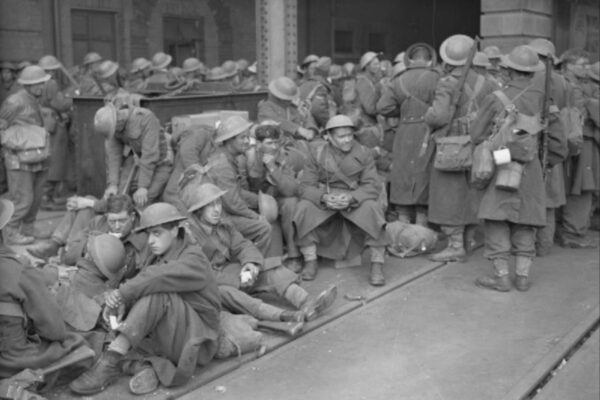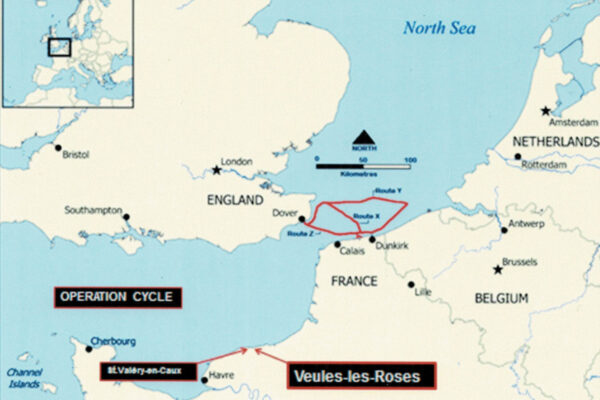As the Dunkirk evacuation unfolded, HMS Wellington was actually in the South West Approaches escorting a convoy back to the UK. On 6th June she was ordered to gather off Le Havre initially, together with 12 other destroyers and sloops, assorted requisitioned ferries, motor yachts and fishing vessels, and then sent to St. Valery-en-Caux on 10th June with HM Ships Gardenia, Saladin and a naval tug. The 51st Highland Division of 20,000 men, commanded by Major General Victor Fortune, had been put under command of the French Army heading for Le Havre. However, cut off near the little seaside port of St. Valery, they asked the War Office for evacuation from there. St Valery was then a small fishing port with a tidal range of 17 feet, and a harbour drying out completely to 600 feet beyond the harbour breakwater. The beaches either side of the harbour were surrounded by high cliffs. A similar evacuation plan based on the successful Dunkirk operation was established, but the operation was continually plagued with poor communications and fog. The naval force off Le Havre was severely bombed by the Germans on 10th June and several vessels had to return to UK. The remaining force began to muster around St Valery.


By daybreak 11th June, an outer perimeter to St Valery had been drawn up and manned by the 51st, approximately three miles from the port, whilst the German 4th Army were advancing towards the area. Around 2,000 troops were evacuated and transferred to HMS Gardenia, with the help of Wellington’s sea boats, for onward passage to Portsmouth. That evening, all who could made their way under cover of darkness to the port and beaches to wait in vain. At daybreak 0300, the situation became even more confusing when a heavy low lying fog descended. This allowed the Germans to see the top of the British ships’ masts from the cliff tops around St Valery, which they could fire on whilst inhibiting movement on the water. With the combination of the fog, the tidal problems at St Valery, and the advancing Germans, the evacuation was finally abandoned on 12th June. The Wellington was the last of the naval forces, with 300 soldiers embarked, to leave St Valery, and return to Portsmouth, where she recovered the crew from one of her 2 seaboats (whalers), which had been involved in beach recovery and rescued in the fog by HMS Gardenia. General Fortune was faced with all being killed or surrender. So the remaining 51st with over 8,000 men, were then marched 700 miles to POW camps in Germany. The Wellington was hit in the Captain‘s pantry (now the Committee Room) by shrapnel when off St Valery, and we believe she was the only ship in the RN to have had shell damage from a Panzer tank!

